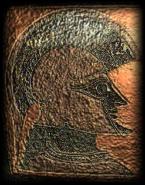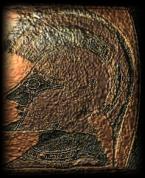
HOME
CONSTITUTION
ECONOMY
EDUCATION
ETHOS
FOREIGN POLICY
WOMEN
MARRIAGE
SEXUALITY
ART
LEONIDAS
ESSAYS
NOVELS
SOURCES
SCREEN SAVER
GUEST BOOK
AUTHOR BIO
SPARTA BLOG
AUTHOR WEBSITE
SPARTAN THEMED
T-SHIRTS, TOTES
& MORE
CONSTITUTION
ECONOMY
EDUCATION
ETHOS
FOREIGN POLICY
WOMEN
MARRIAGE
SEXUALITY
ART
LEONIDAS
ESSAYS
NOVELS
SOURCES
SCREEN SAVER
GUEST BOOK
AUTHOR BIO
SPARTA BLOG
AUTHOR WEBSITE
SPARTAN THEMED
T-SHIRTS, TOTES
& MORE


If you drive down the modern road from Tripoli (or Tegea, as I prefer to think of it) toward Sparti (Sparta), there is a moment when coming around a bend you catch the first glimpse of Taygetos. I will never forget the first time I encountered that view: it took my breath away. I could hardly concentrate on the winding road for straining to get another glimpse of those spectacular mountains. And when the valley of the Eurotas was spread out before me ,it was like revelation. My image of Sparta – ancient Sparta and all that Sparta implied – was transformed in a single instant.IN SEARCH OF SPARTA
Article by Helena P. Schrader. First published in "Sparta: Journal of Ancient Spartan and Greek History.”
A Markoulakis Publication. Reprinted with permission from Markoulakis Publications.
Our images of Sparta, the city, are dominated to this day by what we have been told about Sparta, the society. Even to the individual who has never studied Sparta or read a single book about it, images of Sparta have been transmitted through our language alone. “Spartan” is an adjective used to denote “severe,” “plain,” and “austere.” Laconic speech is “terse,” “concise,” and “economical.” The most rudimentary and fleeting brush with Sparta in literature will not be without reference to rigid discipline, disdain for luxury, self-sacrifice, and endurance of hardship.
The more a novice looks into Spartan society, the quicker he/she is confronted by references to a childhood of deprivation in which one had to steal to get enough to eat and was allowed only one garment per year. The boys, we learn, had to cut down the river reeds with their bare hands or the help of a tool which is dismissed as practically worthless, and then sleep upon these instead of real beds. Worse, they had to live practically in the wild, exposed to the elements without shelter or proper clothes. Books like Gates of Fire describe horrendous beatings to which Spartan boys were apparently subjected for any tiny infraction of the rigid rules of acceptable behavior.
Nor are youths the only Spartans whom, we are led to believe, suffered deprivation. This was a society, according to most sources, where women were prohibited from wearing jewelry or even taking pride in their weaving. Indeed, all gold and silver was banned, and so could adorn nothing – not even the temples of the Gods. The houses, we are told, were not painted (as elsewhere in the ancient world), and if one believes the oft-quoted “sayings of Spartan kings,” they did not even hew their house beams into regular square posts, but left them raw and untreated – one imagines crude timber as in a log cabin. Meanwhile, the young men lived in barracks (notoriously grim places in any society!) and for their entire lives ate their meals at men’s clubs where the cuisine, we soon learn, was infamous throughout the ancient world for its lack of sophistication and variety.
Such a society is most readily imagined in an austere, plain, indeed barren, landscape. After all, a society characterized by deprivation of food, clothes, decoration, and fine cuisine sounds like a desperately poor society, a society barely surviving in a hostile environment, a society that has made a virtue out of necessity. Unconsciously, therefore, I had imagined Sparta situated in a harsh environment, in an infertile valley that yielded little, a place where everyone’s energy had to be devoted to collective survival or face extinction. This seemed, inherently and logically, to be the underlying – if unspoken – root cause of Sparta’s obsession with self-discipline and self-denial for the good of the community, the City.
Nor was I alone in this conclusion. In his best-selling novel Gates of Fire, Stephen Pressfield calls Sparta “a village,” adding: “The whole stinking place would fit, with room to spare, within His Majesty’s [Xerxes of Persia’s] strolling garden at Persepolis. It is … a pile of stones. It contains no temples or treasures of note, no gold; it is a barnyard of leeks and onions, with soil so thin a man may kick through it with one strike of the foot.”
But there is a problem here.
The valley of the Eurotas is anything but barren! It is quite the reverse. It is green and fertile and stunningly beautiful – like riches cupped in the hands of the gods. From the blooming oleander to the wild iris, the valley is a garden. The orange orchards stretch as far as the eye can see, brazenly advertising not only the abundance of soil and sun but water as well. Most spectacular of all, the Eurotas valley is one of those few places on earth that offers the sensually stimulating sight of palm trees waving against a backdrop of snow-capped mountains.
Has Laconia perhaps changed dramatically in the last 2,500 years? Was it poor when the harsh, economical, self-disciplined Spartan society took root in its – then – sparse and almost barren soil? Does it bloom now artificially because of modern fertilizers and irrigation?
If we are to believe the ancient historians, no. Herodotus speaks of Sparta’s “good soil” and Thucydides describes the entire Peloponnese (with the exception of Arcadia) as the “richest part of Hellas.” It is when speaking of Athens, the city modern man most intensely associates with ancient Greek civilization and vast wealth, that Thucydides draws attention to “the poverty of her soil.”
So the fertility and abundance of the valley has not changed since ancient times any more than the shape of Taygetos beyond. But if this rich valley was the seat of Sparta, then Spartan austerity and deprivation did not come from necessity! Sparta’s land was rich, fertile, and productive enough to enable the highest standard of living available in the ancient world – at least to the always modest number of elite Spartiates. In short, if Sparta was as austere a society as it is depicted in modern times, then that austerity was self-imposed.
But are we supposed to imagine that a people raised in the midst of wealth and beauty had no appreciation for either? Or is the very austerity of Spartan society as mythical as the thin soil of Pressfield’s Sparta? After all, Pressfield calls Sparta a village, while Nicolas Nicastro is only willing to concede that the dominant superpower of Greece was “an agglomeration of sleepy villages.” Even Jon Edward Martin, an author whose research is on the whole very sound, insists “large buildings were few here” and talks of “a small collection of civic buildings clustered to the southeast of the acropolis.” Yet Pausanias, who traveled to Greece in the 2nd century AD – long after Sparta’s decline from prominence and more than half a century after its “golden era” in the 6th century BC – needs 26 sections and more than 60 pages to describe the city! Even then, he claims he has not described everything, but rather has selected and discussed only “the really memorable things.”
The contrast between popular assumptions about Sparta’s physical appearance as a place of provincial insignificance, if not downright crude ugliness, and Pausanias’ lengthy listing of temples, palaces, sanctuaries, monuments, and public buildings suggests that modern readers may have been as misled by their own preconceptions about the city as they have been about the fundamental fertility of the Sparta’s landscape.
Yes, Sparta had no walls, but this only means it could spread out graciously upon its valley, as all major European cities did after their confining medieval walls were torn down. No one today would call Paris, Vienna, or Rome “a collection of villages” simply because they are in fact many villages that have grown into a single metropolis after the need for fortifications disappeared and economic growth fueled urbanization. Why should we assume, just because Sparta was made up of five distinct villages in pre-archaic times, that it was not – in its years of glory – a cohesive, dynamic city?
No, Sparta never had a hill inside the city to match the majesty of Athen’s acropolis – but then, nor did Corinth or Tegea or Olympia itself. Athens was the exception, not the rule. In most ancient cities, as in Sparta, the acropolis was an integral part of the lowland city.
No, nothing we can find in Sparta today can hold a candle to the remnants of Athens still so magnificently scattered through the modern city – but then Sparta was destroyed by earthquakes many times over the centuries. It was flooded by the Eurotas. It was abandoned. Nothing destroys architectural monuments so completely as abandonment. Nor should it be forgotten that Sparta has not been systematically subjected to archaeological excavation in almost a century. Can we honestly say we have any idea of what Sparta might have looked like?
No Spartan has left a written description of their city that has survived to our time. The depictions of Sparta that have shaped modern perceptions come from “strangers” – such as Herodotus, Thucydides, Xenophon, Plutarch, Pausanias – not to mention Plato and Aristotle. What might Sparta have looked like through the eyes of someone born and raised there? Would a Spartan have found the Acropolis in Athens “magnificent,” or perhaps instead “distant, intellectual, and arrogant”? Would a Spartan necessarily have admired the altar at Pergamon? Or found it perhaps “gaudy” and “busy” – as many people see rococo architecture today? Sparta was different from other Greek cities. Does that necessarily mean it was less attractive? Totally without its own unique charms?
Let me be heretical. We know that in ancient Greece most statues and temples were painted vivid colors and the Gods dressed in robes, ivory, gold, and jewels. What if Spartan austerity indeed extended to temples, statues, and monuments, and these like themselves, were adorned only with natural beauty – naked stone sculptures and marble? Isn’t that what we find strikingly beautiful in Greek architecture and sculpture today? The perfection of proportion, symmetry, and form? The lifelike poses, gestures, and expressions? Would we rather see Venus de Milo painted in flesh tones with red lips and blond hair? Would we admire the Parthenon in Athens as much if it were dressed in gaudy paint?
What if Spartan homes were indeed devoid of elaborate interior paintings because, unlike their Athenian counterparts, they were not crammed into an overcrowded city and surrounded by high walls that blocked out almost all light? Spartan houses could be built on a generous plan, they could incorporate interior courtyards planted with fruit trees and herbs, they could surround themselves with gardens and orchards, they could sparkle not with gold and silver but the glinting of sunlight on water in internal fountains. Spartan homes could have windows that let in the light, and they might have decorated their homes – as they did themselves – with things of nature: cut flowers, bowls of fruit, running water. Such things are transient; they rarely leave an archaeological record.
Nor should we forget that Spartan bronze works were coveted across the ancient world, that Spartan sculptors found work at Olympia, that Spartan pottery, while it never reached the artistic pinnacle of Corinthian or Athenian, was neither plain nor crude. Spartans clearly did not disdain all forms of art, nor refuse to surround themselves with objects of beauty. When they could not compete with products of their own, they imported them – just as we do today.
So the next time you drive through that magnificent, fertile valley that was once the home of Sparta, think again about what Sparta might have looked like. Ask yourself if such a magnificent cradle might not have produced a splendid city far more pleasing to modern taste than what contemporary Athens or Corinth would have offered. Picture upon the broad floor of the Eurotas valley a city of wide avenues lined with trees. A city full of marble monuments, pure Doric temples, sun-soaked theaters and imposing stoas. A city with large villas set in blooming gardens. A city where the barracks and civic buildings are interspersed between sunny open spaces set aside for running and horse racing. A city decorated with fountains and flowering trees. In short, a city much as we would plan one today.
References
Herodotus, The Histories.
Martin, Jon Edward (2007), The Headlong God of War: A Tale of Ancient Greece and the Battle of Marathon (Baltimore: PublishAmerica).
Nicastro, Nicholas (2005), The Isle of Stone (New York: New American Library).
Pausanias, Guide to Greece
Pressfield, Steven (1999), Gates of Fire (New York: Doubleday).
Thucydides, History of the Peloponnesian War.

 |
 |
 |

ONLINE TRANSLATOR AND DICTIONARY
PRIVACY I COPYRIGHT I
CITING I SITE MAP
This site is best viewed with IE6 (or higher), a browser window sized at 1024 pixels wide or wider, and with a monitor display resolution set at 1280x1024.
Text varies on this site between British and American English spelling. Most research was done in Europe and compiled for British English publications. Interviews and reviews reflect both American and British English, as Helena Schrader is a leading authority on this subject in the US and Europe.
Contents of this website are copyrighted. ©1993-2012 Helena P. Schrader unless otherwise noted. If you would like to use the material of this site, please contact Helena Schrader. If you experience any problems with this site, please contact the web mistress.
Last updated September, 2012
Site design and maintenance Crystal Cloud Graphics
Web Hosting Elysium Gates.com
Site design and maintenance Crystal Cloud Graphics
Web Hosting Elysium Gates.com